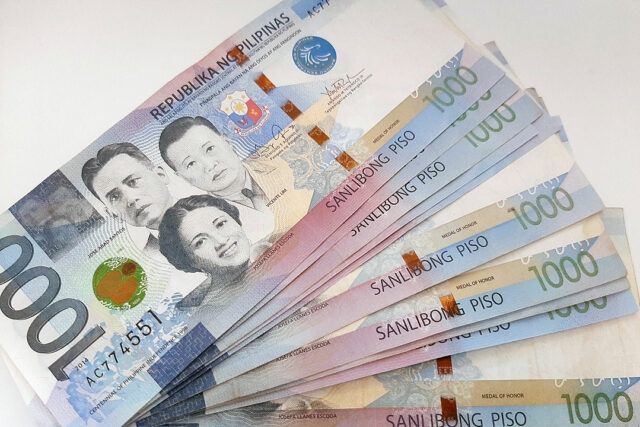The 21st Century Philippine Navy: The challenge of building capabilities amidst unfilled expectations

For three months in 2012, the Philippines engaged China in a dangerous standoff near Scarborough Shoal. This maritime incident between the two countries began on April 10 when the Philippine Navy dispatched its flagship, the BRP Gregorio Del Pilar, to Scarborough Shoal to apprehend eight Chinese boats allegedly illegally fishing in this land feature. Both countries were claiming this feature.
At the onset of the standoff, China immediately had the upper hand when it used a civilian vessel to force a Philippine Navy surface combatant to back away and withdraw from the shoal. More significantly, the standoff also exposed the Navy’s weakness.
EARLY EFFORTS TO MODERNIZE
The aftermath of the three-month standoff at Scarborough Shoal urged the Aquino Administration to push for the modernization of the Navy. In June 2012, the Navy formulated the Philippine Fleet Desired Force Mix, which envisioned that the Philippine government would spend about $12 billion for the acquisition of the following: three submarines, six frigates, 12 corvettes, 18 Offshore Patrol Vessels (OPVs), 42 multipurpose attack craft, and 30 patrol boats, among others. The Navy also developed the Active Archipelagic Defense Strategy (AADS) in December 2013. The AADS is composed of three strategic concepts: a.) maritime situational awareness; b.) maritime operations; and, c.) maritime cooperation.
The Aquino administration, however, was immobilized by scant financial resources. The Navy acquired only two second-hand US Coast Guard Cutters (the BRP Gregorio Del Pilar and the BRP Alcaraz) and signed the contract for 12 F/A-50 multi-purpose fighter planes from South Korea. Though the Navy acquired six Multi-Purpose Attack Crafts (MPACs), the Department of National Defense (DND) postponed the purchase of missile-armed MPACs. Furthermore, it could not source the much-needed blue-water missile-armed ships, search-and-rescue vessels, naval helicopters, strategic sea lift ships, and top-of-the-line interceptors to protect the country’s oil exploration projects and territorial claims in the South China Sea because of the shortfall in funds allocated by the Philippine Congress.
CONTINUING THE EFFORTS
The Duterte Administration continued its predecessor’s arms modernization program. In September 2016, the DND signed a procurement contract for the construction of two frigates with Hyundai Heavy Industries (HHI) as the contractor. In August 2019, South Korea donated a Pohang class corvette to the Philippines. Formerly the Chungju of the Republic of Korea Navy (ROKN), the corvette named BRP Conrado Yap became the most heavily armed PN ship and has been designated for anti-submarine warfare missions in the South China Sea. In July 2020, the Navy commissioned its first brand-new guided-missile frigate, the BRP Jose Rizal, manufactured by the HHI shipyard in Ulsan, South Korea. The newly acquired frigate is capable of waging anti-air, anti-surface, anti-submarine, and electronic warfare operations.
In October 2020, the Navy received the first of eight fast-attack interdiction craft-missile (FAIC-M) purchased to replace its aging force killer medium or medium patrol craft. Half of the FAIC-M will be armed with non-line-of-sight missiles and will be deployed in the country’s key sea-lines-of-communications (SLOCs), such as Mindoro, Balabac, Sibutu, and Basilan Straits against conventional naval threats.
In March 2021, the Navy commissioned its second missile frigate, the BRP Antonio Luna (FF151). The commissioning of this frigate marked the completion of the Navy’s long-delayed frigate acquisition project that began during the Aquino Administration.
FACING A GUNS-VERSUS-BUTTER DILEMMA
The Navy has embarked on a major effort to develop itself into a credible naval force by mothballing its huge inventory of Second World War vintage destroyer escorts, high endurance patrol escorts, motor gunboats, etc., and acquiring some modern naval assets in the past few years.
Early in his term, President Ferdinand Marcos, Jr. faces a guns-versus-butter dilemma; he has to decide whether he would fund the third horizon of the AFP modernization program. This program will further capacitate the Philippine armed forces to safeguard the country’s SLOCs.
THE STRATEGIC PARTNERSHIP WITH FRANCE
As the Philippines and France mark the 75th anniversary of bi-lateral relations, a new chapter in their continuing engagement in defense and security promises to significantly boost the Navy’s defense capability.
Said French Ambassador to the Philippines Michèle Boccoz in a recent Op-Ed article, “As two nations of the Indo-Pacific, our shared goal of developing independent foreign policies in the region first and foremost entails the protection of our territorial sovereignty, and the possibility to freely navigate international waters. This is why France has been increasing patrols in the region since the launch of its Indo-Pacific strategy in 2018, and successfully developed defense partnerships in the region.”
With French support, the Armed Forces of the Philippines, under the Horizon 3 of its modernization program, is planning to acquire the Philippine Navy’s first submarine.
On Sept. 14, the Stratbase Group under the patronage of the French Embassy in Manila, will host an international forum on “Revolutionizing the Philippine Defense Posture with France in the Indo-Pacific.” High officials of France and geopolitical and defense experts will explore and define the opportunities for stronger maritime security and defense cooperation.
With all the challenges on multiple fronts the nation is facing today, revitalizing relations with states that respect the rule of law is critical to Philippine defense posture.
Dr. Renato De Castro is a trustee and program convenor of the Stratbase ADR Institute.










